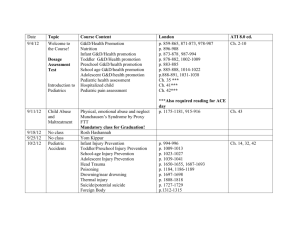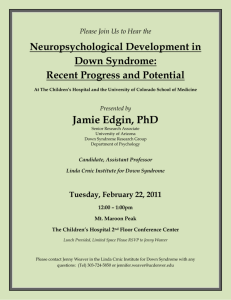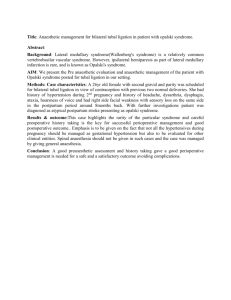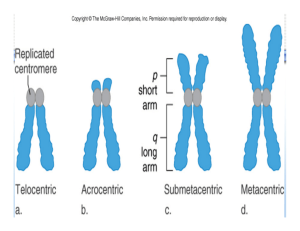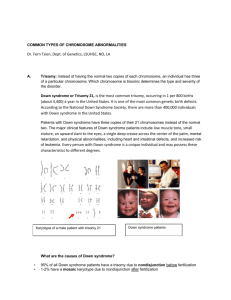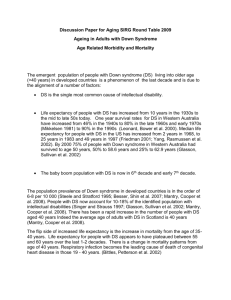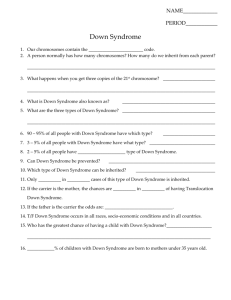DOC - Down Syndrome Australia
advertisement
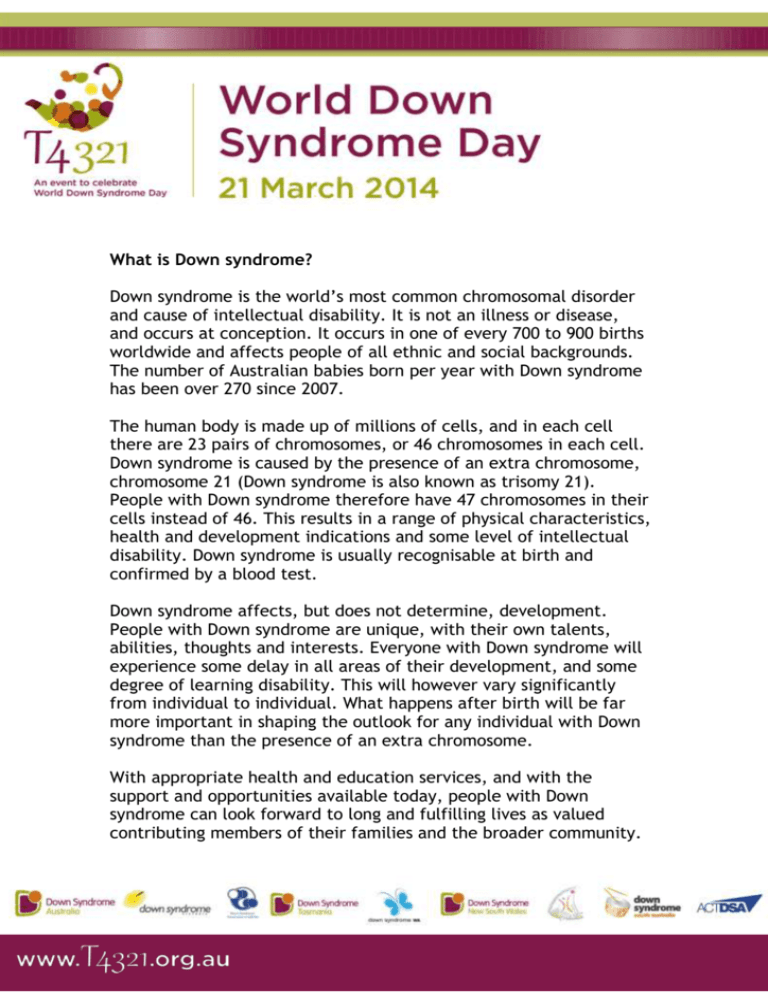
What is Down syndrome? Down syndrome is the world’s most common chromosomal disorder and cause of intellectual disability. It is not an illness or disease, and occurs at conception. It occurs in one of every 700 to 900 births worldwide and affects people of all ethnic and social backgrounds. The number of Australian babies born per year with Down syndrome has been over 270 since 2007. The human body is made up of millions of cells, and in each cell there are 23 pairs of chromosomes, or 46 chromosomes in each cell. Down syndrome is caused by the presence of an extra chromosome, chromosome 21 (Down syndrome is also known as trisomy 21). People with Down syndrome therefore have 47 chromosomes in their cells instead of 46. This results in a range of physical characteristics, health and development indications and some level of intellectual disability. Down syndrome is usually recognisable at birth and confirmed by a blood test. Down syndrome affects, but does not determine, development. People with Down syndrome are unique, with their own talents, abilities, thoughts and interests. Everyone with Down syndrome will experience some delay in all areas of their development, and some degree of learning disability. This will however vary significantly from individual to individual. What happens after birth will be far more important in shaping the outlook for any individual with Down syndrome than the presence of an extra chromosome. With appropriate health and education services, and with the support and opportunities available today, people with Down syndrome can look forward to long and fulfilling lives as valued contributing members of their families and the broader community.





